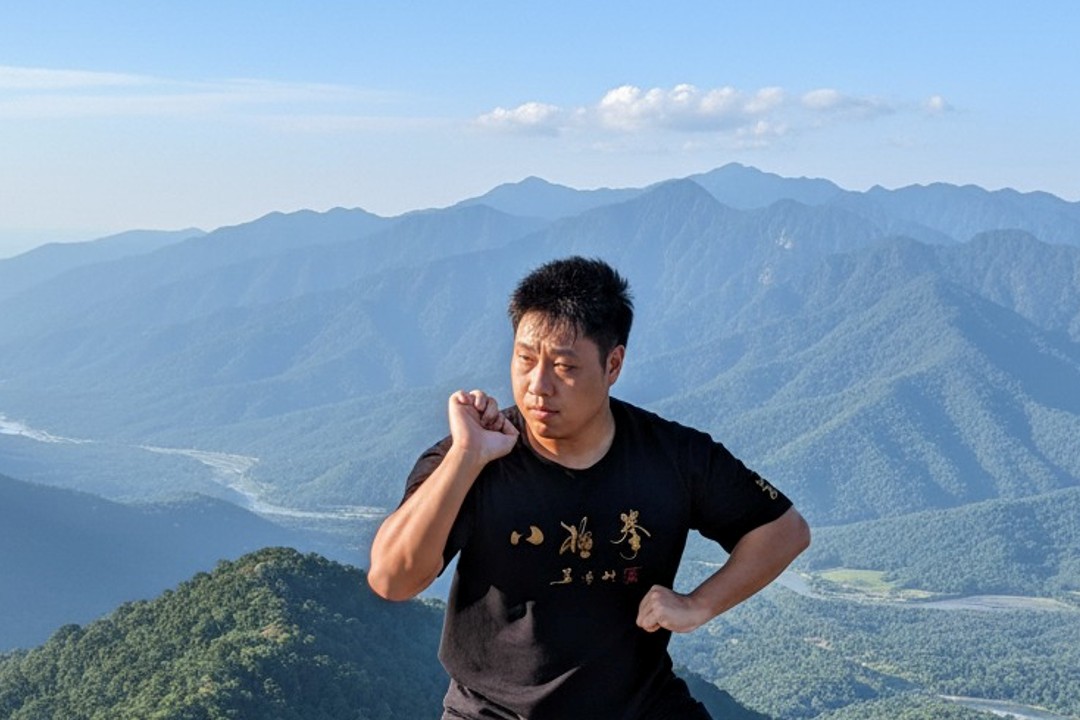 Bajiquan - Introduction
八极拳 (初级课程)
Bajiquan - Introduction
八极拳 (初级课程)

Week 1–2: Foundations of Structure and Rooting
The first two weeks of training begin with an introduction to the philosophical and practical foundations of Bajiquan. Students will explore the unique features of Bajiquan: including its emphasis on explosive full-body power, aggressive entry techniques, and the practical application of simple yet direct movements. We explain the significance of structure, rooting, and stability as the cornerstone of the art. Physically, training starts with Zhuang Gong (standing postures) and Huan Bu (Changing Stances), as well as some basic strikes.
Week 3–4: Stepping into Power – Mobility and Transition
With foundational stance work underway, students now begin to train Bajiquan’s signature footwork. These two weeks focus on dynamic stepping and transitions, vital for both offensive entering and defensive repositioning. Key steps include Zhen Jiao (stamping step), Chuang Bu (charging step), and Xun Bu (sliding or shifting step). These stepping patterns are practiced slowly and then more explosively, with careful attention to coordination between upper and lower body. Proper step training lays the groundwork for effective entry into the opponent’s center and is crucial for later form execution and sparring work.
Week 5–6: Kau Zhuang – Building Impact and Stability
Weeks five and six introduce Kau Zhuang: body contact techniques that reinforce structure under impact. These exercises are essential in developing the confidence and resilience required for combat. Students practice a variety of ‘closing’ techniques using different parts of the body, including San Kau Bi (three closing arms), Kau Jian (shoulder closings), Kau Bei (back), Kau Kua (hips), and Kau Zhou (elbows). These are trained against targets or partners (when available) to simulate real pressure. Kau Zhuang reinforces rooted stance and shock absorption and also conditions the body for receiving and delivering force without compromising posture. This bridges stillness from Zhuang Gong with dynamic movement from stepping practice.
Week 7–8: Dan Cao – The Single Strikes of Bajiquan
Now equipped with structural and stepping basics, students begin practicing Dan Cao: isolated techniques that form the core vocabulary of Bajiquan. While seemingly simple, these single movements train explosive, targeted force generation, and introduce practical applications such as striking, intercepting, and entering. Some of the key Dan Cao include Cheng Chui (supporting hammer fist), Pumian Zhang (face-pouncing palm), Pi Shan (mountain-splitting palm), Quan Bao (circular embrace), Kua Da (hip strike), Long Na (dragon grasp), and Ding Zhou (pressing elbow). Each technique is practiced repeatedly to build sharpness, whole-body connection, and clarity of execution. During this phase, students also start to link steps with hand techniques, building toward flowing movement.
Week 9–10: Liu Da Kai – Internal Dynamics and Power Principles
These weeks introduce the heart of Bajiquan’s internal mechanics: Liu Da Kai—the Six Big Openings. These are more than techniques; they are dynamic principles of power generation and transmission. Students learn the meanings and applications of Ding (press), Bao (embrace), Dan (single), Ti (lift), Kua (close), and Chan (wrap), and how they shape every movement in the art. Techniques like Ding Zhou, Bao Zhou, Dan Yang Da, Ti Zhou, and Da Chan exemplify these principles. Emphasis is placed on expansion and compression, inward and outward motion, vertical and horizontal directionality, and the integration of spine, waist, and limbs. Understanding Liu Da Kai begins to awaken the practitioner's sensitivity to internal energy flow and the subtleties of martial power.
Week 11–12: Forming the Whole – Baji Xiaojia
In the final phase of the beginner course, students are guided through Baji Xiaojia, the small frame form that integrates everything learned so far. Xiaojia trains explosive power, application angles, stepping, stance transitions, and Dan Cao within a coherent structure. Unlike purely aesthetic routines, Xiaojia is focused on practical application and maintaining real combat principles. Movements are repeated slowly to emphasise structure, and speed is gradually introduced with power expression at key points. This form also reinforces breath control, mental focus, and the Bajiquan spirit of direct confrontation. By learning this form, students attain a foundational command of Kaimen Bajiquan and are ready to move into intermediate forms, partner drills, and applied combat sets. Note this is only introductory (the first Xiaojia. As Xiaojia has further routines and advanced concepts (12 Levels, XIaojia Shier Ji)
Classes
Nov. 27, 2025 - Jan. 29, 2026 Enroll
Every Thursday Night 7-9pm, 10 Weeks
Venue: Bedok
121 bedok north road (HDB)
Instructor Zhejia Cen
Zhejia commenced his martial arts journey in Judo, and later became a student of Bajiquan under M. Wu in 2018. He is responsible for coaching the entry level programs of Bajiquan.